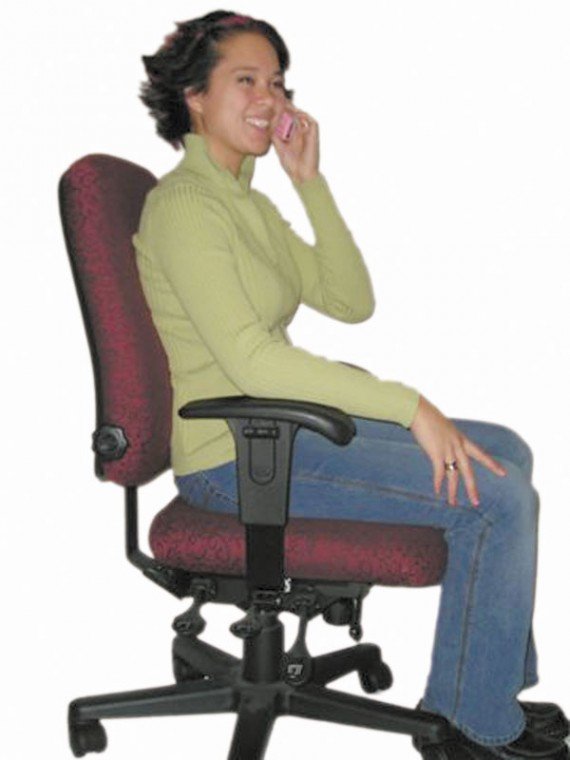Do you find yourself squirming in your chair? Leaning on an
armrest all the time? Slumping down in your chair?
You might not be suffering permanently from poor postural
habits. You might just have a chair that doesn’t support you.
Do you find yourself squirming in your chair? Leaning on an armrest all the time? Slumping down in your chair?
You might not be suffering permanently from poor postural habits. You might just have a chair that doesn’t support you.
A chair that fits and supports you while you work is one of the best investments you can make, especially if you’re in front of the computer or at a desk much of the time. Many people spend a lot of money on desks, cabinets and computer equipment, but skimp on the chair. For your health and comfort, make your chair a priority.
While it isn’t necessary to spend thousands, expect to pay a minimum of $275 to $400 for a well-made ergonomic chair with a strong array of features. If you choose to spend less, you might still find adequate support and features, but you may sacrifice durability and quality.
Depending on your needs, you should look for more than the basic features of adjustable seat height, 5-point base and carpet casters.
Adjustable seat angle is a useful feature for changing from upright tasks to forward or slightly reclined tasks; changing your inclination according to task eases the demands on your spine.
Adjustable backrest height and angle, along with lumbar support, enable you to place the curves of the backrest in accordance with those of your spine for improved support and comfort. Adjustable armrest height lets you place the armrests at the proper level for lightly supporting your arms without forcing your shoulders upward.
Armrests that adjust very low or out of the way can enable you to sit close to the desk unhindered. If you expect to change armrest level frequently, look for easily adjusting arms.
If you are exceedingly tall or short, you’ll appreciate adjustable seat depth or a chair designed for your size. You may also want a chair with rocking ability and adjustable tension, or soft casters designed for hard floors.
In addition to chair features and adjustability, consider the contour and padding of the backrest and seat. Backrests vary greatly in contour, height, width and amount and location of lumbar support.
Some chairs seem to cradle the torso while others have narrow backs designed for freedom of arm movement.
Some have low backrests that support the pelvis and leave the upper body free; others support the entire spine and head.
If you have a prominent curve in your upper back or a protruding derrière, you may want to consider a chair whose backrest accommodates these attributes.
Chair seat contours also vary greatly, from simply shaped seat pans with curved “waterfall fronts” to specialized forms such as “tractor seats” and “saddle seats.” Padding ranges from foam rubber to memory foam, to a breathable mesh.
The best way to find out which chair is most comfortable for you is to sit in several models. Finding someone knowledgeable to explain features and fit the chairs to you is of great help.
If possible, sit in the chair you’re considering for several minutes or more.
Try it out at a desk or computer similar to yours if you can. Arranging to “demo” a chair by using it at home for a few days is the best test.
Finally, no matter how comfortable or supportive your chair is, it’s not advisable to stay in it for too long.
Our bodies were not made for prolonged sitting. Breathing, circulation and joint, muscle and nerve function all depend on movement.
Even if only for a few seconds, I recommend a good standing stretch at least every half hour and longer walking or stretching breaks taken intermittently throughout the day.
Although you may fear wasting valuable work time, you’ll find that these refreshing breaks can clear your mind, ease body tensions and increase your productivity and energy level.













